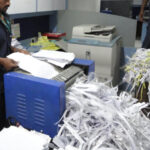Solar energy systems are a significant investment towards a sustainable future, but they can be vulnerable to the seemingly minor threat of rodents. These small critters can cause substantial damage to solar installations, affecting their efficiency and longevity. This article offers a detailed guide on preventing and protecting solar panels from rodent damage, providing essential insights for homeowners and businesses looking to safeguard their green investment.
Understanding the Threat
Rodents, including squirrels, rats, and mice, pose a threat to solar panels and their associated wiring. They are known to chew on electrical wiring and the insulation around wires, leading to system malfunctions, reduced efficiency, and even potential fire hazards. The nesting of these animals can also lead to physical damage to the panels themselves and obstruct the optimal functioning of the solar system.
Prevention Strategies
To mitigate the risk of rodent damage, several prevention strategies can be employed:
- Regular Inspections: Regularly inspect solar panel installations for signs of rodent activity, including droppings, gnaw marks, or nests. Early detection can prevent significant damage.
- Install Critter Guards: Critter guards are protective barriers that can be installed around the perimeter of solar panels to prevent rodents from accessing the underside where they typically cause damage.
- Seal Entry Points: Ensure that any gaps or openings around the roof and the solar panel mounts are sealed, removing potential entry points for rodents.
- Manage Vegetation: Keep trees and bushes trimmed back from the roof to discourage rodents from jumping onto the solar panels from nearby branches.
Rodent-Proofing Solutions
In addition to prevention, there are rodent-proofing solutions that can offer longer-term protection for solar panels:
- Wire Mesh Screening: Installing durable wire mesh around the solar panel system can block access while still allowing for ventilation.
- Metal Flashing: Metal flashing can be used around the edges of the installation to create a physical barrier that is difficult for rodents to penetrate.
- Ultrasonic Repellents: These devices emit a high-frequency sound that is unpleasant to rodents but inaudible to humans, helping to keep the area rodent-free.
Maintenance and Monitoring
Maintaining the efficiency and longevity of your solar system involves ongoing monitoring:
- Regular Cleaning: Keep solar panels clean from debris and droppings that can attract rodents.
- Professional Inspections: Consider having a professional inspection of your solar system annually to check for any signs of damage or potential vulnerabilities.
Seeking Professional Help
If rodent damage is suspected or for preventive measures, it may be beneficial to seek professional help. Companies like SolarMe specialize in solar system installation and maintenance and can offer solutions tailored to protect against critter damage. For more in-depth information on safeguarding your solar panels, the Solar System Critter Damage guide provides a wealth of knowledge and practical tips.
In conclusion, protecting solar panels from rodent damage is crucial for ensuring the system’s efficiency and durability. By implementing preventive measures, employing rodent-proofing solutions, and maintaining regular inspections, homeowners and businesses can safeguard their investment against the threat of critters. With the right approach, the longevity and performance of solar energy systems can be preserved, contributing to a sustainable and efficient energy future.











